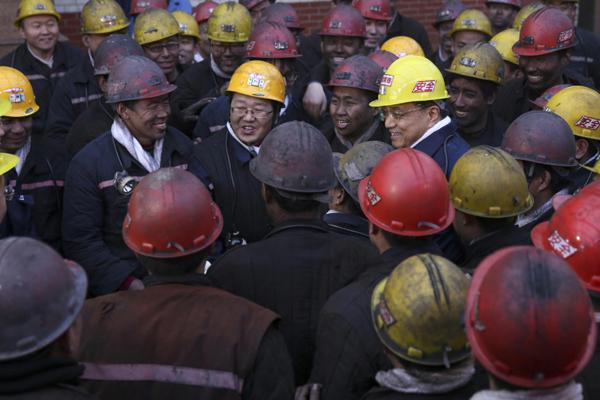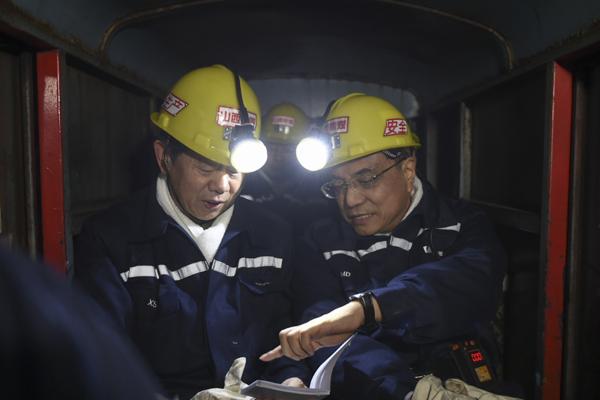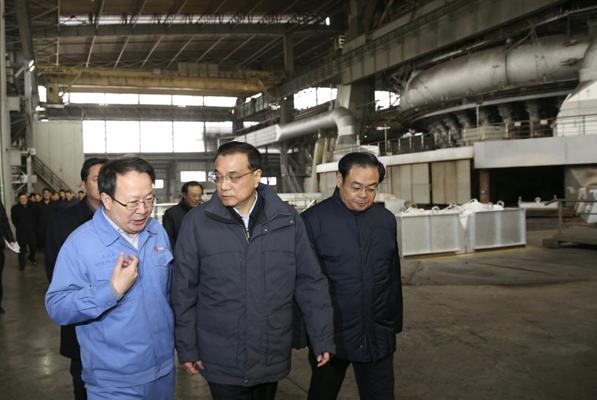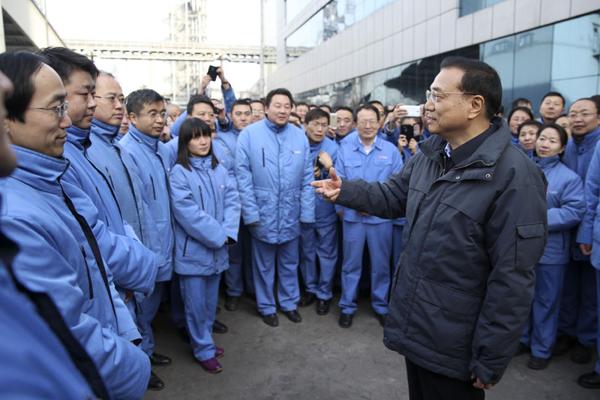
Premier Li Keqiang talks with workers at a coal mine of Shanxi Jiaomei Group in Shanxi province on Jan 5, 2015. [Photo/Xinhua]
Closing down “zombie companies”, relocating workers and shutting sideline businesses that detract from their core competences are among the measures the government will introduce in the coming two to three years to deepen the country’s reform in central State-Owned Enterprises (SOE).
The decision was unveiled during the State Council’s executive meeting on May 18 chaired by Premier Li Keqiang.
“Central SOEs have played an indispensable role for China’s social and economic development, and we should give them full credit in that regard,” Premier Li said. “Yet crucial problems exist with them as well, and now we must tackle them step by step, which is in fact deepening the SOE reform.”
Central SOEs in China, which total 106, refers to those State Owned Enterprises owned by the central government. Most of these enterprises cover key sectors such as telecommunications and energy, which are crucial to the country’s social and economic development.
Major problems existing with the bloated central SOEs include weakness in core business, too many sideline businesses, low efficiency and excessive layers of administration and management.
Yet such overblown hierarchies at these central SOEs are also part of the reason why reforms have never been easy to realize. On many occasions, Premier Li reiterated time and again that the government is resolved to carrying out such reform, describing such determination as “cutting one’s own wrist like a brave warrior”.
The meeting decided that 345 “zombie companies” subsidized by the 106 central SOEs, will be reorganized or left to the market within three years. Central SOEs are also required to shrink management levels from the existing five to nine to lower than three or four, while stripping off 20 percent of their subsidiary legal entities within three years.

Premier Li Keqiang inspects coal production at a coal mine of Shanxi Jiaomei Group in Shanxi on Jan 5, 2015.[Photo/Xinhua]
The government aims to reduce losses caused by central SOE’s subsidiary enterprises by 30 percent, and realize a 100 billion yuan increase in central SOE profit by the end of 2017.
Meanwhile, the government will cut the country’s coal and steel capacity produced by central SOEs by 10 percent this year and in 2017. Coal, iron and steel are among the key objectives in the country’s effort to reduce excess capacity.
During the meeting, Premier Li again stressed that the idea of a “weight loss and fitness” plan for SOEs should be further carried out, a metaphor that he first used in this year’s government work report referring to an optimization of SOEs in general.
The reform of SOEs in general is a major task set by the government in this year’s government work report, delivered in March by Premier Li. It has pointed out that the government will push hard to ensure success in upgrading SOEs, pledging that structural adjustment will be made so that they will be developed through innovation, reorganization and reform in SOE personnel management.

Premier Li Keqiang inspects Taiyuan Iron & Steel (Group) Co Ltd in Shanxi on Jan 4, 2015.[Photo/Xinhua]
“Fostering greater spirit of craftsmanship is of vital importance for central SOEs while concentrating in their core business and improve product quality, and this should be the core competence of central SOEs”, Premier Li urged during the meeting, adding that they should not turn too much into sideline businesses that the private sectors are good at.
The new plan also encourages internal restructuring for central SOEs and optimizes allocation of resources. Social capital is encouraged to participate and support central SOE restructuring.
The new plan also calls for more innovation and scientific research to be carried out in central SOEs.

Premier Li Keqiang inspects Taiyuan Iron & Steel (Group) Co Ltd in Shanxi on Jan 4, 2015.[Photo/Xinhua]
